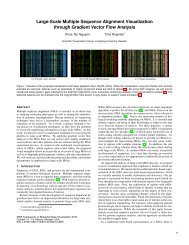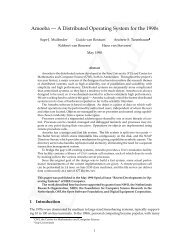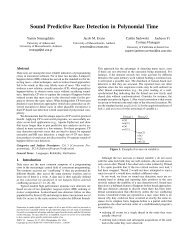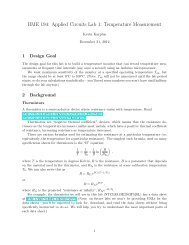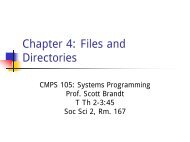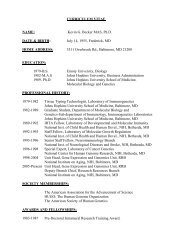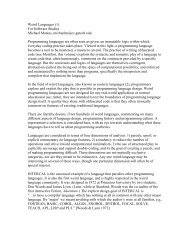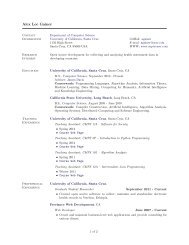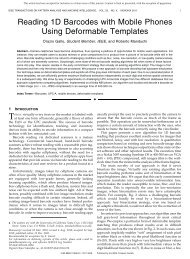A FAST AND ROBUST FRAMEWORK FOR IMAGE FUSION AND ...
A FAST AND ROBUST FRAMEWORK FOR IMAGE FUSION AND ...
A FAST AND ROBUST FRAMEWORK FOR IMAGE FUSION AND ...
Create successful ePaper yourself
Turn your PDF publications into a flip-book with our unique Google optimized e-Paper software.
lurred images to produce a higher resolution image or sequence. The multi-frame super-<br />
resolution problem was first addressed in [8], where they proposed a frequency domain ap-<br />
proach, extended by others such as [19]. Although the frequency domain methods are intuitively<br />
simple and computationally cheap, they are extremely sensitive to noise and model errors [20],<br />
limiting their usefulness. Also by design, only pure translational motion can be treated with<br />
such tools and even small deviations from translational motion significantly degrade perfor-<br />
mance.<br />
Another popular class of methods solves the problem of resolution enhancement in the<br />
spatial domain. Non-iterative spatial domain data fusion approaches were proposed in [21], [22]<br />
and [23]. The iterative back-projection method was developed in papers such as [24] and [25].<br />
In [26], the authors suggested a method based on the multichannel sampling theorem. In [11],<br />
a hybrid method, combining the simplicity of maximum likelihood (ML) with proper prior in-<br />
formation was suggested.<br />
The spatial domain methods discussed so far are generally computationally expen-<br />
sive. The authors in [17] introduced a block circulant preconditioner for solving the Tikhonov<br />
regularized super-resolution problem formulated in [11], and addressed the calculation of regu-<br />
larization factor for the under-determined case 1 by generalized cross-validation in [27]. Later,<br />
a very fast super-resolution algorithm for pure translational motion and common space invari-<br />
ant blur was developed in [22]. Another fast spatial domain method was recently suggested<br />
in [28], where low-resolution images are registered with respect to a reference frame defining a<br />
nonuniformly spaced high-resolution grid. Then, an interpolation method called Delaunay tri-<br />
angulation is used for creating a noisy and blurry high-resolution image, which is subsequently<br />
deblurred. All of the above methods assumed the additive Gaussian noise model. Furthermore,<br />
regularization was either not implemented or it was limited to Tikhonov regularization.<br />
In recent years there has also been a growing number of learning based MAP meth-<br />
1 where the number of non-redundant low-resolution frames is smaller than the square of resolution enhancement<br />
factor. A resolution enhancement factor of r means that low-resolution images of dimension Q1 × Q2 produce a<br />
high-resolution output of dimension rQ1 × rQ2. Scalars Q1 and Q2 are the number of pixels in the vertical and<br />
horizontal axes of the low-resolution images, respectively.<br />
13




